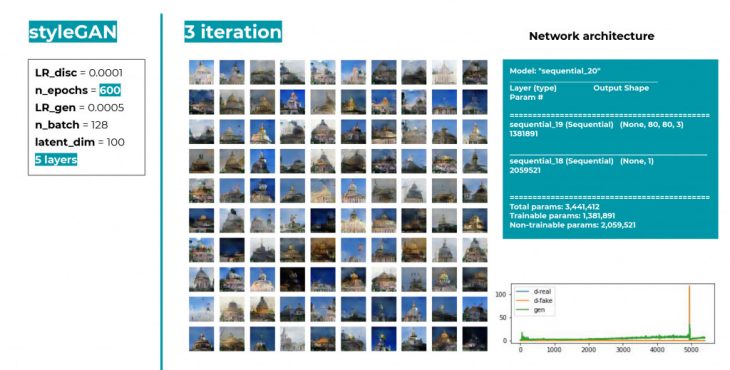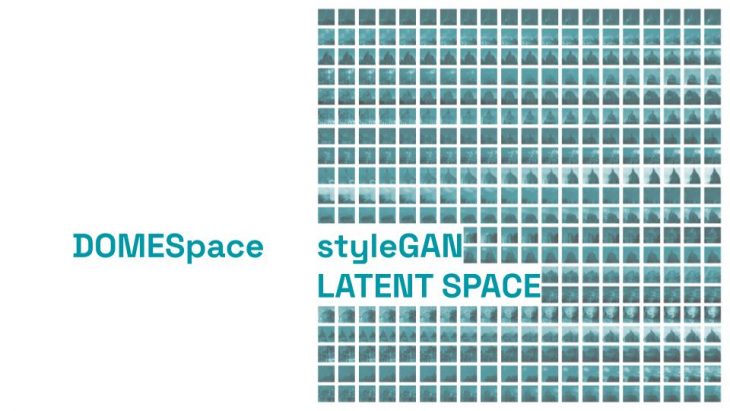
The aim of this project is to explore the spatiality of domes using the styleGAN model. First, we tested which types of images are appropriate for training the model and which are not. To this end, we tested two datasets of images related to the spatiality of domes.The first dataset consists of interior images of the domes, while the second consists of exterior images of the domes surrounded by the sky background. We prepared the two datasets by resizing the images and then converting them to .npy format for use in the model.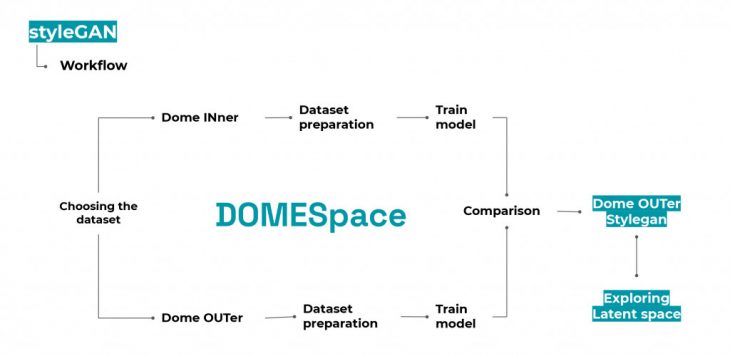
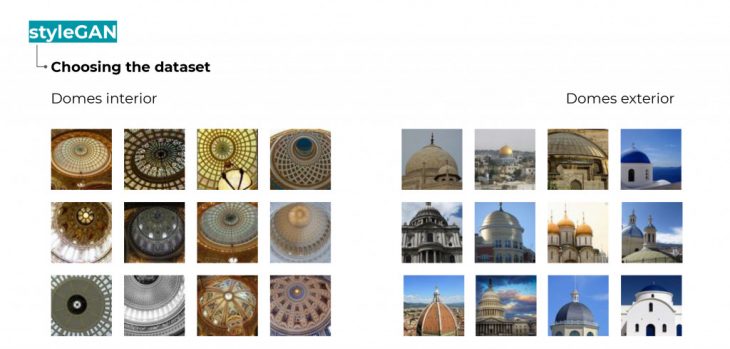
We performed 20 iterations on both datasets, varying the network architecture: changing the number of epochs, batches, and LR generator. Obviously, images with a background have a clearer result than images without a background. Comparing the results, we discarded the internal dataset and continued to experiment with the external images. One of the problems for the interior dataset is certainly the type of photo, which does not provide a smooth background, and requires more exploration in training the model.
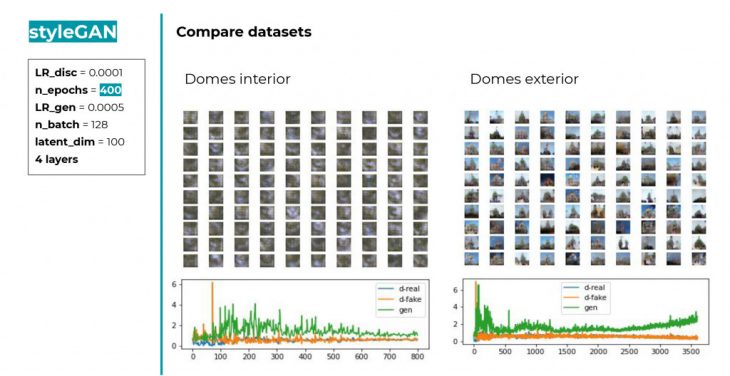
DOMES – exterior
We again tested the stylegan model on the chosen dataset through three iteration.
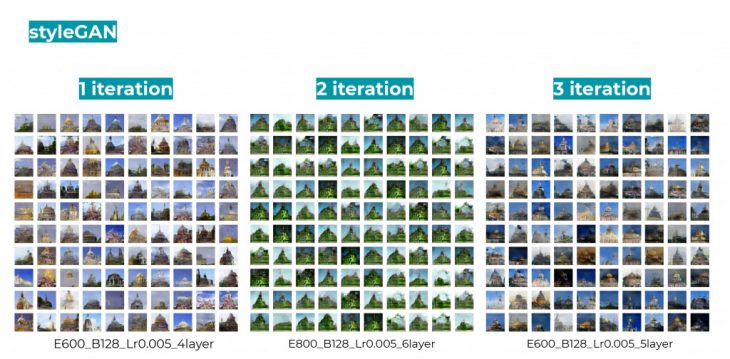
Run 1
The first set of exploration was done with random values, to see how the model responds. We started with 600 epochs, 128 batch sizes, and LR_gen 0.0005
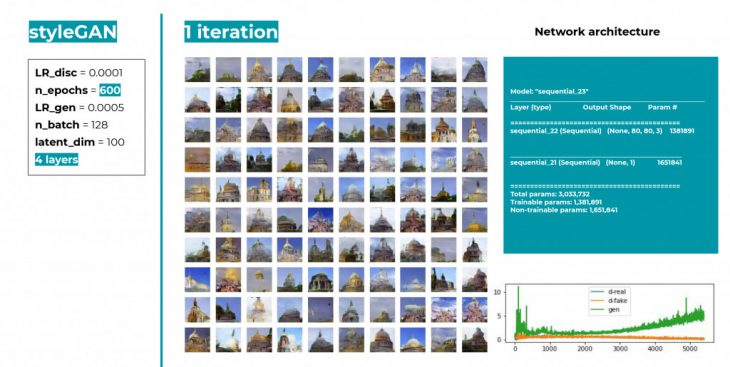
Conclusion
With the increase of both epochs and levels we have achieved not good results. The images towards the last 200 epochs deformed, leading to overfitting of the model. With this hyperparameters we get a good results, we have an increasing tendency of the generator and decresing tendency of loss. So, we decided to improve the number of epochs and the deep layer of the model to try to achieve better results.
Run 2
To improve the training we increase the hyperparameters of the model, increasing the epochs from 600 to 800 and inserting two hidden layer of the model.

Conclusion
With the increase of both epochs and levels we have achieved not good results. The images towards the last 200 epochs deformed, leading to overfitting of the model.
Run 3
In order to bring the model back to good training, we decreased both the number of layers and epochs.
Conclusion
The model achieved good results, especially the epochs around 300/400.The last one shows the model slightly over fitting.
Latent space
For the latent space we have explored the models based on previous training with epochs 600, 530 and 440



Final Conclusion
Through this series of experiments we have arrived to slightly clearer understanding of the balance of qualities of the input data and the network architecture and now feel more confident about using GANs in our own formal research. We think that the next step will be the work with bigger resolution images to deeply explore the stylegan model and latent space, and perhaps implement it with a custom dataset.
Credits
DOMESpace. Exploring latent space is a project of IAAC, Institute for Advanced Architecture of Catalonia developed in the Master in Advanced Computation for Architecture & Design – MaCAD, module Artificial Intelligence in Architecture 2020/21 by :
Students: Laura Marsillo and Nataliya Voinova
Faculty:Stanislas Chaillou and Oana Taut
